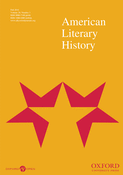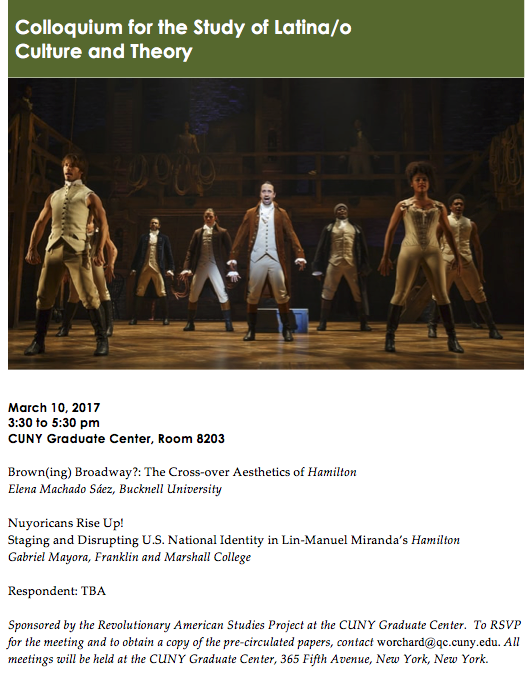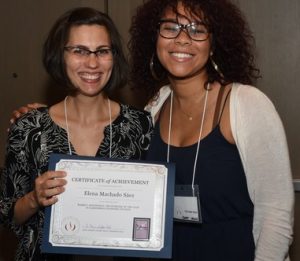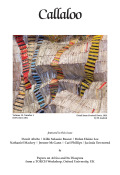

At the 2017 Caribbean Studies Association conference held in the Bahamas, Elena Machado Sáez chaired a panel on “Absent Presence: Silenced Histories in Caribbean Writing and Art.” She presented on “Blackout on Broadway: Affiliation and Audience in Lin-Manuel Miranda’s Hamilton.” Her fellow panelists included Jocelyn Stitt from the University of Michigan who presented on “Raw Materials? Absence and Caribbean Knowledge” and Sobeira Latorre from Southern Connecticut State University who presented on “Blackness, Taínos, and Historical Recovery in Dominican Literature in the US.”
 The journal
The journal 

 achado Sáez published her
achado Sáez published her  The journal
The journal  Check out the creative nonfiction piece I recently published in the online literary journal,
Check out the creative nonfiction piece I recently published in the online literary journal, 



